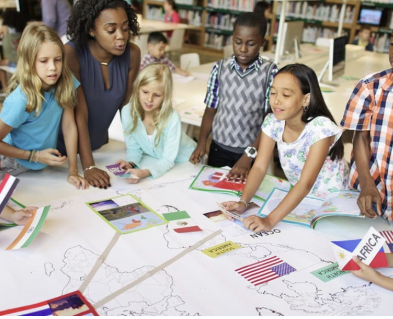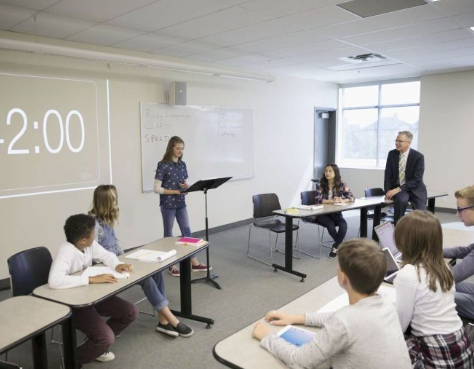Virtual reality (VR) is transforming how people experience and understand cultures around the world. By creating immersive environments, VR technology allows students, travelers, and lifelong learners to explore global traditions, languages, and histories in ways that were once only possible through direct travel. This innovative approach to cultural learning is helping build empathy, global awareness, and cross-cultural understanding in a digital age.
What Is Cultural Immersion in VR?
Cultural immersion through VR involves using 3D environments, 360-degree videos, and interactive simulations to virtually place users in different cultural settings. Whether visiting ancient landmarks, participating in traditional festivals, or exploring city life in another country, VR makes these experiences more vivid and engaging. Users can interact with virtual characters, listen to native speakers, and engage in activities that reflect daily life and customs in various regions. These immersive experiences create emotional and intellectual connections that deepen cultural understanding.
Applications in Education
In classrooms, VR is being used to enhance lessons in geography, history, social studies, and world languages. Students can take virtual field trips to museums, historic sites, or cultural events—gaining first-hand insights without leaving the classroom. These immersive experiences help students connect emotionally with the material, making learning more memorable and meaningful. Educators can design lessons around specific cultural themes, such as the architecture of ancient civilizations, indigenous music and dance, or the impact of historical events, offering students context and perspective that traditional methods may not provide.
Moreover, VR enables differentiated instruction by adapting cultural learning experiences to different grade levels and learning abilities. For younger students, colorful and interactive VR stories can spark curiosity, while older students can engage in guided tours or simulations that encourage critical thinking about global issues.
Language and Communication Practice
VR platforms that simulate real-life conversations are valuable tools for language learners. By navigating a marketplace in Morocco or ordering food in a French café, users can practice language skills in authentic contexts. This helps learners build confidence and understand the cultural nuances of communication. The non-verbal cues, such as gestures and facial expressions observed in these simulations, help reinforce proper etiquette and tone.
Some language platforms even allow role-playing games where users must solve challenges or complete quests using the target language. These types of immersive language experiences not only reinforce vocabulary and grammar but also allow learners to experience cultural context firsthand.
Fostering Global Citizenship
Exposure to different cultures through VR can foster empathy and open-mindedness. Users gain a deeper appreciation of global diversity by experiencing life from different perspectives. Programs focused on global education use VR to promote tolerance, reduce stereotypes, and encourage respectful cross-cultural interactions. Students can virtually step into the shoes of peers in other parts of the world, witnessing their daily routines, celebrations, and challenges.
This deeper awareness helps cultivate informed and compassionate global citizens who are better prepared to engage in our interconnected world. Teachers and institutions can use VR to spark conversations around social justice, global economics, migration, and environmental stewardship in a way that encourages curiosity and empathy.
Travel and Tourism Insights
Beyond education, VR is also changing how people prepare for travel. Virtual tours allow users to preview destinations, explore local customs, and better understand etiquette before visiting in person. This enhances travel planning and helps travelers engage more respectfully with local communities. Businesses in the tourism sector are adopting VR to promote cultural sites, allowing potential visitors to explore cities, museums, or natural attractions before booking their trips.
For those unable to travel due to financial, physical, or political barriers, VR provides an accessible alternative. It offers people the opportunity to experience the sights, sounds, and stories of different places, fostering appreciation and awareness without the need to board a plane.
Challenges and Considerations
While VR provides valuable learning opportunities, it’s important to approach cultural immersion with sensitivity. Developers and educators should ensure that content is respectful, accurate, and informed by authentic cultural voices. Ongoing collaboration with cultural experts can help avoid stereotypes and promote genuine representation. There’s also a need to make sure that these experiences do not oversimplify or commodify cultures.
Furthermore, accessibility remains a concern. Not all students and schools have the resources or equipment needed for immersive VR experiences. Educational equity must be considered when integrating these technologies to avoid widening existing learning gaps.
Looking to the Future
The future of VR in cultural immersion is promising. With the development of more affordable headsets and increased internet connectivity, these tools will become more widely available. Emerging technologies like augmented reality (AR), artificial intelligence, and haptic feedback are being integrated into VR experiences to make them even more realistic and engaging. As global classrooms continue to grow more diverse, VR can help bridge cultural gaps and bring people closer together through shared experiences.
New projects and partnerships between educators, technologists, and cultural institutions are already underway. From digitizing UNESCO heritage sites to recreating endangered traditions, VR is not only teaching about cultures but helping to preserve them for future generations.
Conclusion
VR is offering new possibilities for cultural immersion that make global learning more accessible, inclusive, and impactful. By stepping into virtual environments, learners can explore the richness of world cultures in ways that foster understanding and connection. As technology advances, VR will continue to play an important role in building a more empathetic and culturally aware society. With thoughtful design, equitable access, and cultural collaboration, virtual reality can be a powerful tool for lifelong global education.


